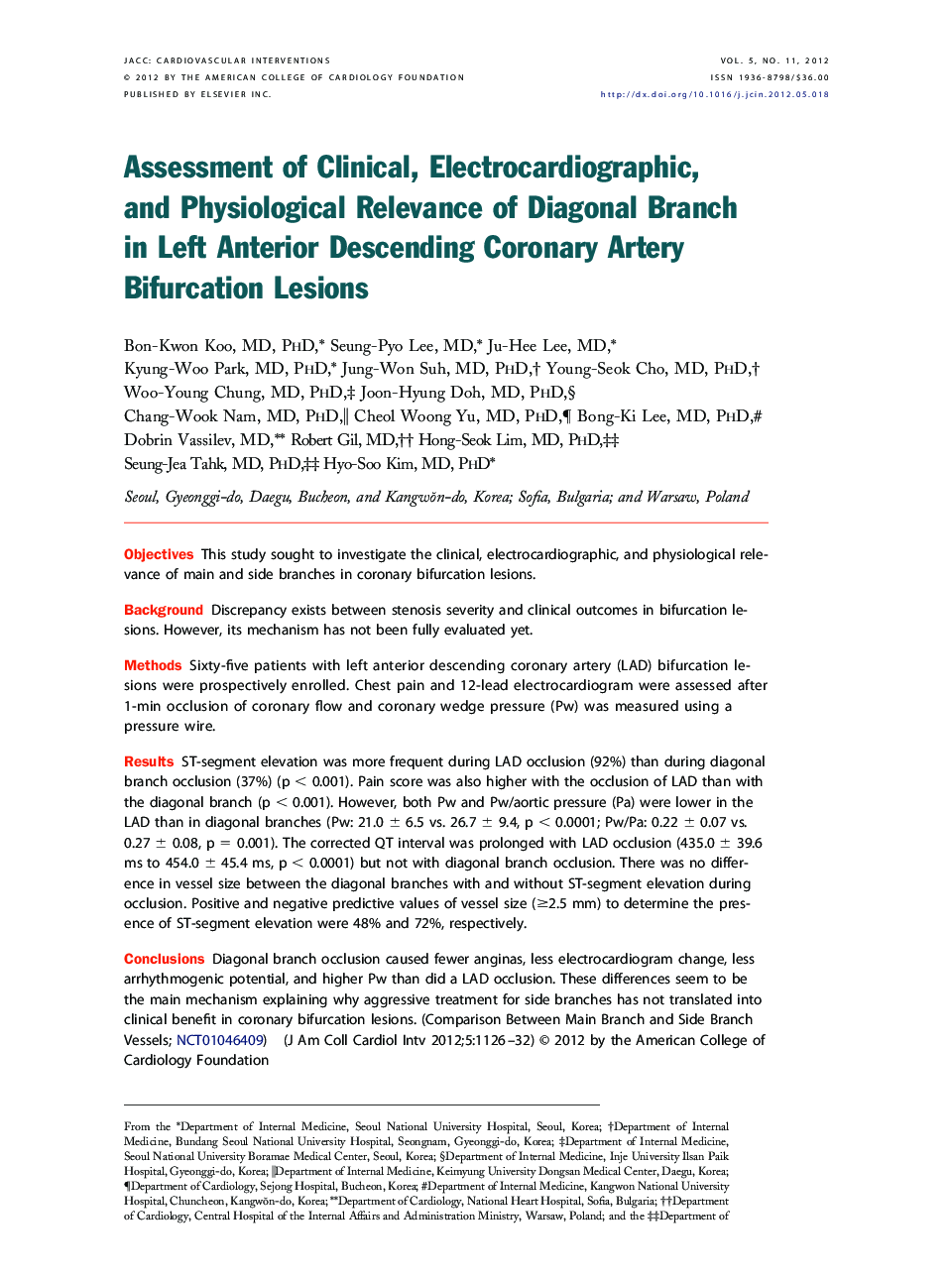| کد مقاله | کد نشریه | سال انتشار | مقاله انگلیسی | نسخه تمام متن |
|---|---|---|---|---|
| 2940829 | 1177046 | 2012 | 7 صفحه PDF | دانلود رایگان |

ObjectivesThis study sought to investigate the clinical, electrocardiographic, and physiological relevance of main and side branches in coronary bifurcation lesions.BackgroundDiscrepancy exists between stenosis severity and clinical outcomes in bifurcation lesions. However, its mechanism has not been fully evaluated yet.MethodsSixty-five patients with left anterior descending coronary artery (LAD) bifurcation lesions were prospectively enrolled. Chest pain and 12-lead electrocardiogram were assessed after 1-min occlusion of coronary flow and coronary wedge pressure (Pw) was measured using a pressure wire.ResultsST-segment elevation was more frequent during LAD occlusion (92%) than during diagonal branch occlusion (37%) (p < 0.001). Pain score was also higher with the occlusion of LAD than with the diagonal branch (p < 0.001). However, both Pw and Pw/aortic pressure (Pa) were lower in the LAD than in diagonal branches (Pw: 21.0 ± 6.5 vs. 26.7 ± 9.4, p < 0.0001; Pw/Pa: 0.22 ± 0.07 vs. 0.27 ± 0.08, p = 0.001). The corrected QT interval was prolonged with LAD occlusion (435.0 ± 39.6 ms to 454.0 ± 45.4 ms, p < 0.0001) but not with diagonal branch occlusion. There was no difference in vessel size between the diagonal branches with and without ST-segment elevation during occlusion. Positive and negative predictive values of vessel size (≥2.5 mm) to determine the presence of ST-segment elevation were 48% and 72%, respectively.ConclusionsDiagonal branch occlusion caused fewer anginas, less electrocardiogram change, less arrhythmogenic potential, and higher Pw than did a LAD occlusion. These differences seem to be the main mechanism explaining why aggressive treatment for side branches has not translated into clinical benefit in coronary bifurcation lesions. (Comparison Between Main Branch and Side Branch Vessels; NCT01046409)
Journal: JACC: Cardiovascular Interventions - Volume 5, Issue 11, November 2012, Pages 1126–1132